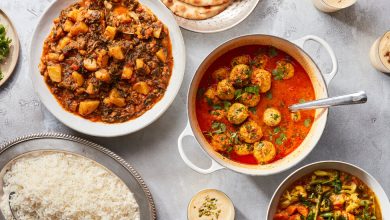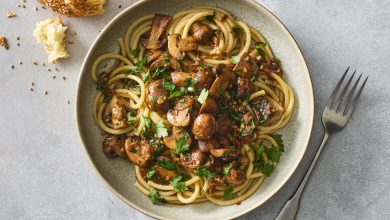The Many Sides of Curry Leaves

At my parents’ home in Kurunegala, Sri Lanka, as at many others across South Asia, curry leaf trees grow in the backyard, suffusing the air with a slight earthiness. That scent only intensifies when the fresh leaves sizzle in coconut oil, an integral step in so much of our home cooking.
If you’ve long been using curry leaves, you know they bring a dish together, making it richer, more robust. A sprig or two elevates, but doesn’t dominate, other flavors. Once fried, they release their sweet, mildly citrusy aroma into the fat, scenting and seasoning vegetables, fish, meat and even rice.
In South India, where their use dates back centuries, they are sautéed in oil for nadan kozhi, a spice-laden Keralan chicken curry, and ground into a paste to make karuveppilai thokku, a popular condiment.
And, in Sri Lanka, they flavor kaha bath, a special-occasion rice dish, in which the leaves are cooked in shimmering butter and turmeric, and kola kenda, in which they’re blended with coconut milk and rice, then boiled and served at breakfast. Of all the things Sri Lankans use curry leaves for, my favorite is parippu themparaduwa, a simply seasoned tempered dal.
Curry leaves are small, slender and green, and their flavor is often likened to that of lemongrass, asafetida and citrus, to which they are botanically related. But there’s nothing quite like them.
Despite their name, curry leaves bear no relation to curry powder. The English word “curry” originates from the British colonization of India and is derived from the Tamil term kari.
Although the leaves are often simmered in many dishes, they’re usually not eaten. That is, of course, unless the herb is crisped and used as garnish, scattered atop snack mixtures or rice.
The herbal aroma and taste of the leaves lend themselves to sambals and dips as well. They can also be steeped in boiling water for a few hours for an herbal tea. Just don’t eat them raw, as they’re sharp in flavor and unpleasantly chewy in texture.
Buy them fresh, then wrap fresh sprigs in paper towels and store them in a sealed container away from the sun and moisture. (They’ll last for about a week in the refrigerator and two months in the freezer.) But if you can’t find fresh ones, don’t fret. Dried and frozen leaves also work fine in most dishes, and the dried leaves can be stored in the freezer to preserve their scent.
Recipe: Parippu Themparaduwa (Dal With Curry Leaves)
Follow New York Times Cooking on Instagram, Facebook, YouTube, TikTok and Pinterest. Get regular updates from New York Times Cooking, with recipe suggestions, cooking tips and shopping advice.





